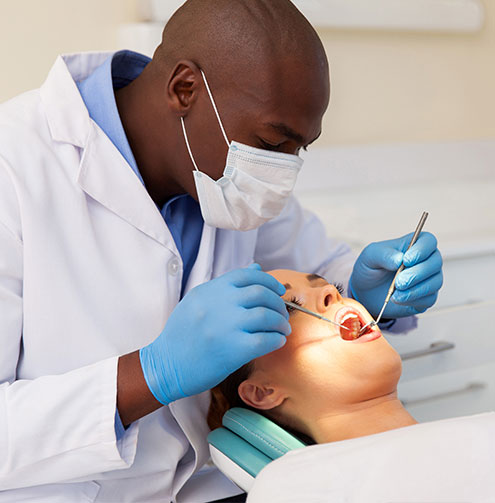Apicoectomies
in Arvada, CO

Typically, root canal therapy is used to treat an infection that has developed in a tooth to repair it and prevent an extraction from becoming necessary. However, there are times when a root canal will not be sufficient but there are still options available to the patient to save their tooth. Whether you need to schedule a consultation with an experienced endodontist to assess your situation or you’re looking for an endodontist in Arvada that offers apicoectomies, our team at Root of Endodontics would be glad to assist. Contact our office today!
Contact Us
When is an apicoectomy necessary?
An apicoectomy is necessary when a standard root canal procedure has failed to eliminate an infection or when an infection recurs at the root tip of a tooth. This surgical procedure targets the root’s apex and surrounding infected tissue, particularly when nonsurgical treatments cannot resolve the issue. It is often recommended when there is persistent inflammation, cysts, or infection in the bone around the root tip, despite prior root canal therapy. An apicoectomy can help save the tooth and prevent the need for extraction, maintaining dental health and function.

How does endodontic microsurgery work?
Endodontic microsurgery, including apicoectomy, involves the use of advanced surgical techniques and specialized instruments to treat complex dental issues at the root of a tooth. During an apicoectomy, the endodontist makes a small incision in the gum to expose the tooth root and surrounding bone. Using a microscope for precision, the infected tissue and the tip of the root are removed. The end of the root canal is then cleaned, sealed with a biocompatible material, and the gum is sutured back in place. This meticulous approach ensures thorough cleaning and sealing, promoting better healing and long-term success.

What’s the recovery process like for apicoectomy?
The recovery process for an apicoectomy typically involves some swelling and discomfort, which can be managed with prescribed pain relievers and anti-inflammatory medications. Patients are advised to apply ice packs to reduce swelling and avoid strenuous activities for a few days. Soft foods and good oral hygiene, including gentle brushing and rinsing with salt water, are recommended to promote healing. Stitches are usually removed after about a week, and follow-up visits ensure proper healing. Most patients can return to normal activities within a few days, and complete healing of the bone around the root tip may take several months.
Contact Us
